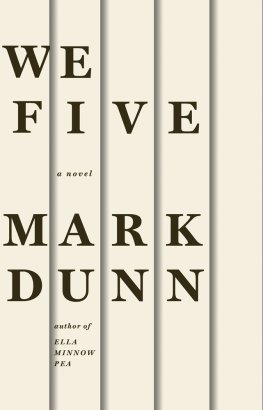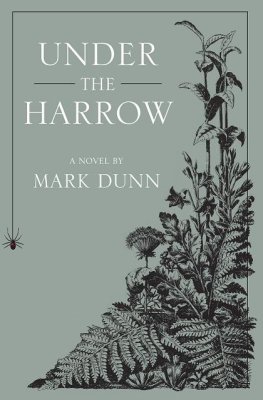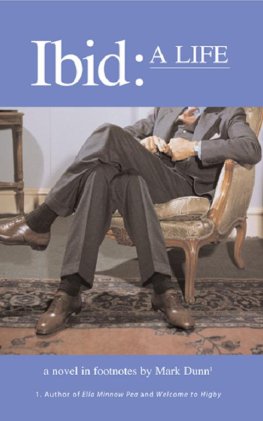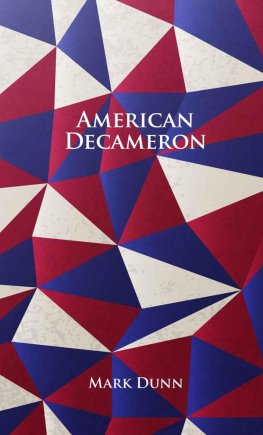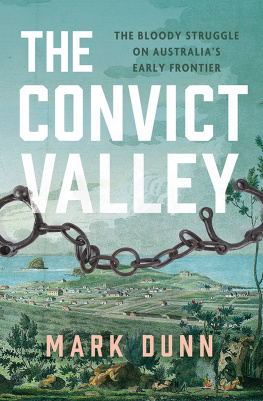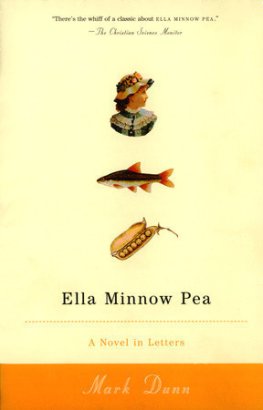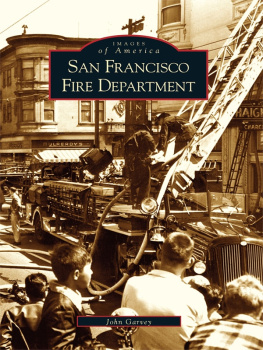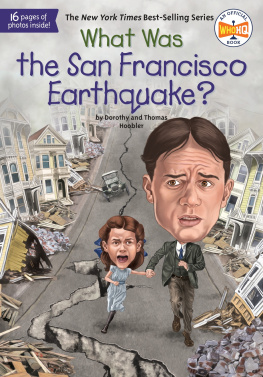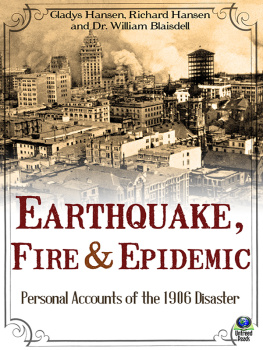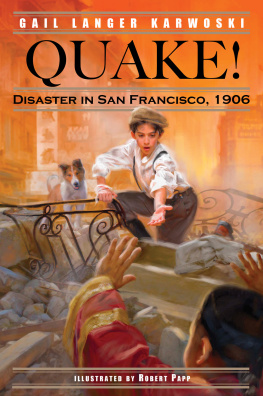For the four Weekley sisters:
Mary, Leslie, Laura, and Julia
All life is just a progression toward,
and then a recession from,
one phraseI love you.
F. SCOTT FITZGERALD, THE OFFSHORE PIRATE
I fell in love with Elizabeth Gaskells secret back-drawer novel We Five in the early nineties when I was looking for a work of Victorian fiction to adapt to the musical stage in partnership with a composer and a lyricist, who have since left the theatre and now raise Jerusalem artichokes. In the course of my investigation into what has happened to Gaskells story of five young female friends who fall prey to five young men of predatory purpose, I discovered that since the posthumous publication of Gaskells book in 1867, it has over the succeeding decades been adapted by three other novelists of some literary stature:
Grady LarsonWe Happy Five, published in 1910.
Gail LoweryFive Saints, Five Sinners, published in 1930.
Daphne RourkeSongs and Sirens, published in 1952.
Swift upon the heels of the publication of my first novel I Am a Time Bomb in 2000, I tried my own hand at retelling Gaskells story (set outside of Manchester, England, in 1859); I placed my version of this story, Five Came Running, in north Mississippi in 1997. It sold respectably well not quite as well as my first novel, but better than my third, published in 2009, The Dithering Heart.
Given the similarities to be found among We Five and its four subsequent adaptations (including my own), I felt that this story might do with one more telling, an amalgamation of all five auctorial voices, each of the five versions of the story coming into violent collision at its climax.
Perhaps a word or two should be said about the books epilogue, which is taken from an upcoming sixth version of the story
Or not.
Mark Dunn
March 2015
WE FIVE
Jane (Janie) Higgins
Maggie (Margaret, Mag, Mags) Barton
Carrie (Caroline, Car) Hale
Ruth (Ruthie) Thrasher
Molly Osborne
THE MEN
Tom (Thomas, Tommy) Catts/Katz who pursues Jane
Jerry (Jeremiah) Castle who pursues Maggie
Will (William, Willy) Holborne who pursues Carrie
Cain Pardlow who is supposed to pursue Ruth
Pat (Patrick, Paddy) Harrison who pursues Molly
FAMILY FOLK
Lyle Higgins Janes younger brother
Clara Barton Maggies mother
Sylvia Hale Carries mother
Herbert (Bert, Herb) & Lucile (Lucille) Mobry Ruths guardians
Michael Osborne Mollys father
Jemma Spalding Mollys cousin
OTHER PLAYERS
Vivian (Vivien, Viv) Colthurst We Fives employer (or manager or immediate supervisor)
Reginald (Reggie) & Mirabella (Bella, Mira) Carries neighbors and friends of We Five
Lydia DeLash Comfort famed evangelist in the Aimee Semple McPherson mold
Miss (Abigail) Dowell Miss/Ms. Colthursts assistant
Tulleford, England, August 1859
(from
We Five,
by Mrs. Elizabeth Cleghorn Gaskell)
Jane was the oldest of the five. She was also the tallest (with or without the clackety pattens). Though she was thought at times to be the most outspoken of the five, yet her friend Maggie was also possessed of an opining nature, which rivaled sometimes even surpassed Janes characteristic candour.
As for Ruth, let it be said that when she was not repairing in quiet solitude to her books and her biscuits and her beefsteak pudding, she was given to speak her own mind in a clarion voice that tended to call a room to silence.
And what of Carrie and Molly, the remaining points on this pentagram of interlocking friendship? They would enter the lists on occasion themselves, but only for just cause, or if defence of personal honour demanded it, or, in the case of Molly, if the little girl within her was put into a mope. Consequently, Jane Higgins and her friends Maggie and Ruth and Carrie and Molly were given to occasional conversational skirmishes skirmishes that sometimes disrespected Janes seniority (and imposing height) on a variety of topics, each, thankfully, of minor consequence.
Except when they should be of major consequence.
Yet disputation was the natural order of things, and had come to be accepted, as one comes to accept that shawls will fray and draggle, and stays will pinch, and white muslin will soil, but that is no reason to toss aside ones entire wardrobe, which otherwise serves.
For Jane and Maggie and Carrie and Ruth and Molly, having become friends in early girlhood, found a kinship of the heart, which was underpinned by the following sad verity: that with the untimely youthful demises of Maggies two sisters, and the crib death of Mollys younger sister, there was not a single living female sibling to be claimed amongst the quintet (and no siblings at all for four of its members or shall we say, no siblings at all for four of its members of which they were aware). In effect, five sisterless friends became sisters of a different sort, their sisterhood constituting a melding of several hearts that was fixed and enduring a most remarkable thing for five women of an age in which beauty and animal spirit tended to engender the building up of permanent little walls of jealousy and mistrust, as might be readily glimpsed amongst the many other clutches of young maidens who worked and played together in Tulleford, the mill town of their birth. But in this special circle of similarly situated seamstresses, one noticed no such fatuous partitions, despite the inevitable differences in character and temperament to be found amongst them, and if they were at times to disagree and dispute as all sisters will disagree and dispute, there ensued without exception a cleansing aftermath of repentance and the putting of things to rights with a demonstration of only the most tender species of affection.
They called themselves Circle Sisters, or Sisters of the Heart, or, when an economy of self-denomination was required, simply We Five. And each of the young women, having attained in the previous two years the age of one-and-twenty, and each being neither married nor affianced, but, in fact, wholly unattached in any romantic sense, owned a different opinion with regard to her present state of singularity, it being an intolerable lot in the short run for one of their number, tolerable but preferentially undesirable by degrees for three of their number, and utterly and blissfully convenient for the fifth member (who had no desire whatsoever to wed) each of these views to be sorted out and properly assigned for the reader as our story unfolds.
Jane Higgins was, by her own admission, the sage observer. She would not deny the astute observation that she was the wisest member of the group in every aspect of her nature (so long as the contention was voiced out of earshot of any other member of her circle who might disagree). However, Jane was not, by any measure, the most comely of the five, nor ever could she be deemed anything beyond palatable in appearance and pretty after a fashion by the prevailing consensus, her face being attenuated, arguably equine, her eyes deeply set. These attributes might be appropriate for a Transylvanian or Mediterranean exotic, but for a young woman of English stock, they constituted somewhat of a demerit, for they gave the impression of one fixed to a perpetually sombre, even lugubrious mien, or one robbed of restful sleep, or, more unkindly, one given to occasional neighing and clopping of the hooves. In reality, Jane, though crippled by a diminished upbringing, had overcome a great number of personal difficulties, such triumphs of mettle earning her the right to hold her head high and to wear her pride as a badge of honour, and not to be thought of in any negative way whatsoever, save by one generally unacquainted with all her

